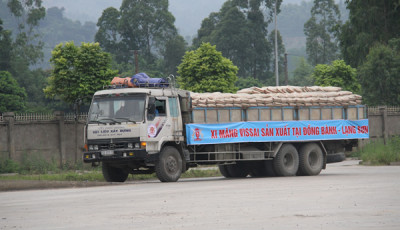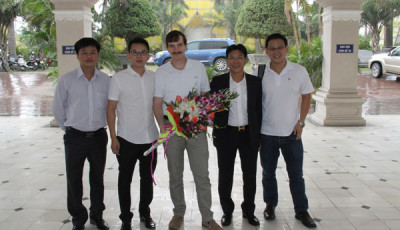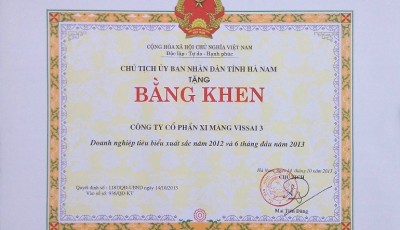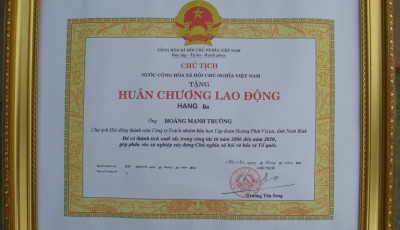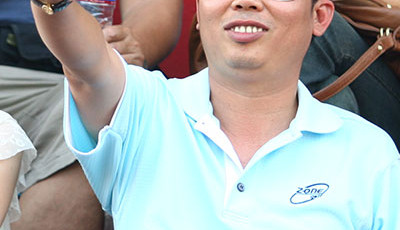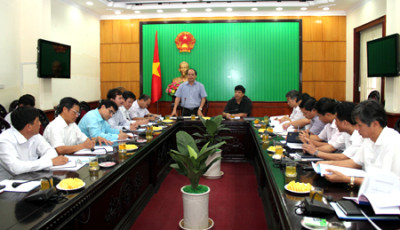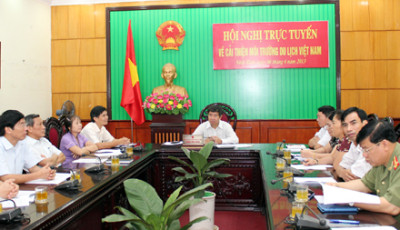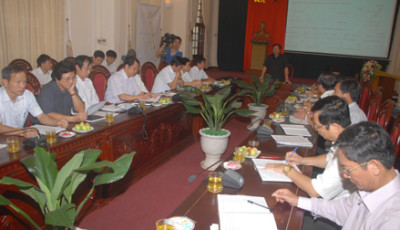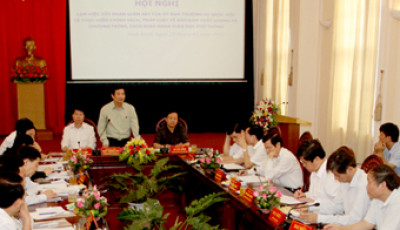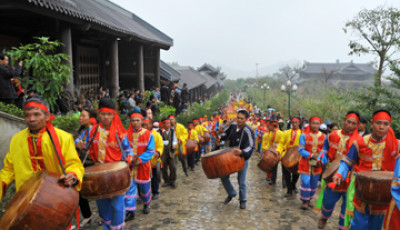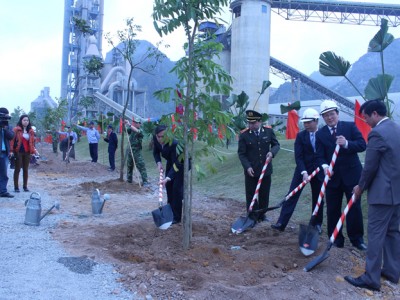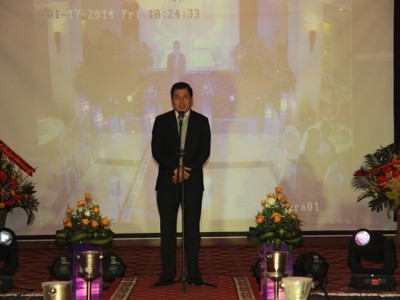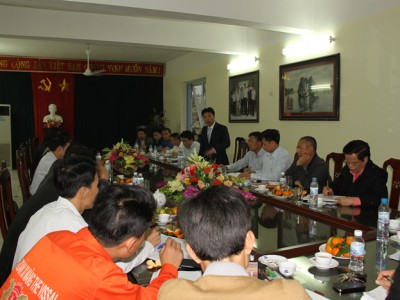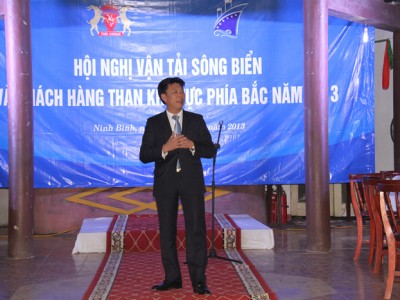Bai Dinh Pagoda Festival
Ninh Binh Tourism – When spring comes in the Hoa Lu ancient capital, millions of Buddhist across the country together with visitors flock to pilgrimage to Bai Dinh Pagoda Festival.

Bai Dinh Pagoda is a complex of pagodas located on Bai Dinh mountain, Gia Sinh commune (Gia Vien). Such complex of pagodas includes an ancient pagoda a new pagoda built in 2003. Bai Dinh pagoda belongs to the historical relic of Hoa Lu ancient capital with many record recognized by Vietnam record center such as Vietnam’s largest pagoda area (107ha); largest bronze Buddha statue in Southeast Asia (The Tathagata Buddha statue weighs 100 tons, including the past, present and future statutes, each of which weighs 50 tons), the two biggest bell in Southeast Asia (36 tons and 27 tons respectively); pagoda with many big Arhat statues in Vietnam (500 statues in green stone at about 2 meters high); pagoda area with the largest well in Vietnam; the most bodhi trees in Vietnam (100 bodhi trees are extracted from the Indian Bodhi tree).
The festival opens on every sixth day of the first month of lunar year. Previously, the festival only lasted for 1 week. Now with the state investment, the pagoda area has been expanded to be a famous and beautiful spiritual cultural area and the Bai Dinh pagoda festival will take place during the spring. Before the opening date and even in the time for Tet, all the caves and pagodas in the Bai Dinh mountain area filled with spiraling up smoke. The festival atmosphere covers the countryside which used to be peaceful and quiet.

The ritual part in Bai Dinh pagoda takes place in a relatively solemn way as this place not only worships the mountain gods, Buddha, Ba Chua Thuong Ngan but also links with many great historical events and famous heroes such as the Holy Nguyen, Quang Trung, Dinh Bo Linh. Therefore, the ritual part includes the total religious belief system in Vietnam, worshipping nature, Buddhist and Confucianism. On the festival, the village organizes the procession of god from the cave. There are flags and drums, followed by the octet orchestra, beautiful boys and girls, old men and women procession in the sincere, solemn but pleasant atmosphere.
The festival is filled with the warmth of youth, respect of elders as well as the joy of tourists and Buddhists. There are crowds pilgrimaging everywhere in the low or high mountains, woodlands or drug forests. People are in and out, up and down but all are exuberant and excited. And when meeting each other, whether familiar or unfamiliar, all happily greet each other with a greeting: “Namo Amitabha Buddha” in such a gentle, loving and warm way.

Bai Dinh mountain superbly stands alone in the mountainous region and is formed by two bow-shaped mountain ranges toward the west like the arm of throne, opening up a wide valley of more than 3 hectares, which is known as Thung Chua. To visit the caves in Bai Dinh mountain, visitors have to step on 300 stone steps, and the higher they go, the fresher air they can feel and all the worries in daily life seem to be forgotten. On the way to the caves, there is Voi Phuc Cave in the right and the cave worshiping Red Face Monsignor, also the keeper of Bai Dinh pagoda.
According to the roadmap, all visitors will see the fork when finishing climbing the slop: On the right is the Buddhist grotto while on the left is Fairy grotto. After a few footsteps, visitors will be amazed at the Buddhist grotto. Over the grotto gate 4 letters engraved on stones, which means: “Save the fame in beautiful landscape”. With the presence of the majesty statues looming in the incense currently circulating in the high caves, visitors feel like being lost in paradise with the magical and mysterious thoughts.
After burning incense and praying for good, visitors continue tracing the alley to the left end of the grotto which then leads to a smaller cave called Cao Son God, a talented general of Hung King. If visitors step up, they will see a bright wide cave gate that leads to a green valley. Legend has it that this is the place of many valuable medicinal plants that St. Nguyen Minh Khong used to gather simples to make miracle drugs. Currently, the drug plants are still being used for or use as pharmaceuticals.

Back to the fork, visitors turn left about 50 meters to reach the Fairy grotto. Such grotto is much larger than the Buddhist grotto, including 7 chambers, i.e. 7 caves, some of which is on the sky or in the earth. All the caves are interconnected through many stones. Some caves have flat floor, even sunken like a hollow while others are awarded by the Creator with a diversified fanciful stalactites ceiling.
Ba Chua Thuong Ngan is located between the main cave and stone in red lacquer trimmed with gold. Around Chua Thuong Ngan is a stunning forest of stone stalactites. By delicate imagination and a foresighted view, visitors can easily name each stalactite and stone in such Fairy grotto. Each stalactite and stone in the Fairy grotto is masterpiece of the Creator and an essence of time on the stone. Only flowing water and eroded stone for thousands of thousands of years that create such magic.
Visitors to Bai Dinh pagoda festival will feel the love of nature and recollect the past when the old generations found the country in a rice field village. Despite being tired, visitors find it interesting to participate in climbing and visiting beautiful caves in the festival atmosphere.
The pilgrimage to Bai Dinh pagoda creates in human the psychological expectation to reach into the beauty and good deeds. It is the expectation of the beauty that makes us more enjoyable, as well as create more faith and love. Each person will find peace of mind and direct to the charity. The festival activities makes visitors exited with wrestling, con throwing, cards, tug and war as well as many other folk games on New Year.
Source: ninhbinhtourism




